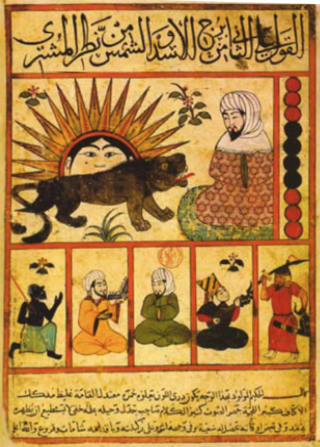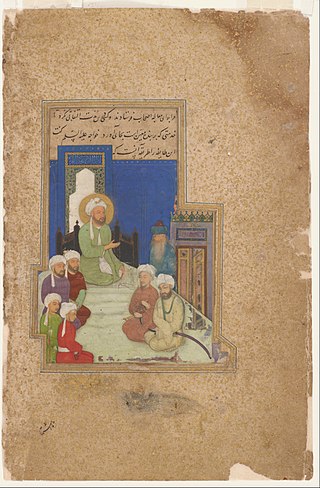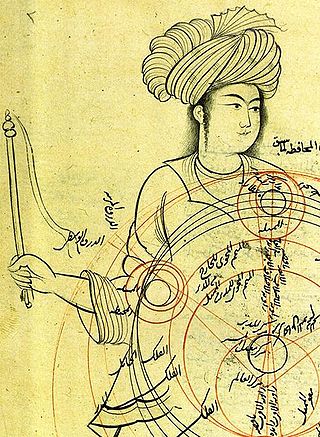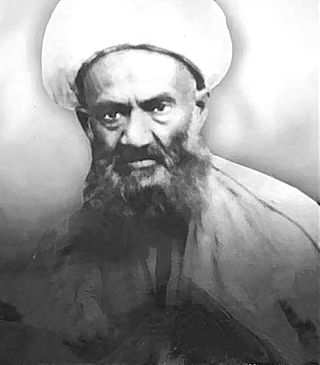Jalal al-Din Muhammad al-Isfahani was a 19th-century Persian physician from Isfahan.
Jalal al-Din Muhammad al-Isfahani, who refers to himself as al-tabib al-Isfahani ("the physician of Isfahan"), composed an Arabic general treatise on therapeutics, arranged in order from head to foot. It was completed on 9 December 1828. The date of completion is given in another copy of the treatise now at the University of California at Los Angeles Biomedical Library, Coll. 1062, MS Ar. 36.
The National Library of Medicine has one of three recorded copies of this treatise. There is also a Persian treatise titled Dastur-i Jalali by the same author, presumably a translation of the original Arabic.
Another Persian treatise on the preservation of health in the human body, Hifz-i sihhat-i badan al-insaniyah is presumably by the same author, but it is said to have been dedicated to the ruler Abu al-Muzaffar Abu al-Mansur Shah Sulayman al-Safawi al-Musawi Bahadur Khan, who ruled from 1666 to 1694. This 17th-century date however would conflict with that found in the therapeutic treatise preserved in copies at UCLA and at NLM.

Ali ibn al-Husayn al-Iṣfahānī, also known as Abul-Faraj, was a writer, historian, genealogist, poet, musicologist and scribe. He was of Arab-Quraysh origin and mainly based in Baghdad. He is best known as the author of Kitab al-Aghani, which includes information about the earliest attested periods of Arabic music and the lives of poets and musicians from the pre-Islamic period to al-Isfahani's time. Given his contribution to the documentation of the history of Arabic music, al-Isfahani is characterised by George Sawa as "a true prophet of modern ethnomusicology".
Jalal ad-Din is a male Muslim given name of Arabic origin, formed from the name Jalal with the suffix ad-Din. It may also be written as Jalal al-Din, Jalaluddin, Jalaleddin, Dželaludin and Djelaludin.

Abu Ma‘shar al-Balkhi, Latinized as Albumasar, was an early Persian Muslim astrologer, thought to be the greatest astrologer of the Abbasid court in Baghdad. While he was not a major innovator, his practical manuals for training astrologers profoundly influenced Muslim intellectual history and, through translations, that of western Europe and Byzantium.

Zayn al-Din Sayyed Isma‘il ibn Husayn Gorgani, also spelled al-Jurjani, was a Persian 12th century royal Islamic physician from Gorgan, Iran. In addition to medical and pharmaceutical sciences, he was also an adept in theological, philosophic, and ethical sciences. Jurjani was a pupil of Ibn Abi Sadiq and Ahmad ibn Farrokh. He arrived at the court in the Persian province of Khwarazm in the year 1110 when he was already a septuagenarian. There he became a court physician to the governor of the province, Khwarazm-Shah Qutb al-Din Muhammad I, who ruled from 1097 to 1127. It was to him that he dedicated his most comprehensive and influential work, the Persian-language compendium Zakhirah-i Khvarazm'Shahi.

Jamal al-Din Muhammad ibn Muhammad ibn Muhammad ibn Fakhr al-Din al-Razi, also written al-Aqsara'i, was a 14th-century Muslim Iranian physician. He became known as Aqsara'i because he moved to Aqsara region of what is now Turkey.

Ghiyāth al-Dīn ʿAlī ibn Ḥusayn ibn ʿAlī Amīrān Iṣfahānī was a fifteenth-century Persian physician and scientist from Isfahan, Iran. He was, in the words of Daniel Beben, 'a polymath in the service of several of the Timurid governors of Badakhshān in the second half of the 15th century' CE. Little is known of him beyond the works attributed to him.

Mahmūd ibn Muḥammad ibn Umar al-Jaghmini or 'al-Chaghmīnī', or al-Jaghmini, was a 13th or 14th-century Arab physician, astronomer and author of the Qanunshah a short epitome of by Avicenna in Persian, and Mulakhkhas (Summary), a work on astronomy.

Qotb al-Din Mahmoud b. Zia al-Din Mas'ud b. Mosleh Shirazi was a 13th-century Persian polymath and poet who made contributions to astronomy, mathematics, medicine, physics, music theory, philosophy and Sufism.

Muhammad Akbar ibn Mir Hajji Muhammad Muqim Arzani also known as Shah Mohammad Arzani Dehlavi was an 18th-century Persian physician in Mughal India.
Muhammad Mehdi ibn Ali Naqi, was an early 18th-century Persian physician from Isfahan.
Abu al-Qasim al-Habib Neishaburi was a Persian physician from Khorasan who lived before 1750CE. His name indicates he was from Nishapur.

Muḥammad Mu’min ibn Mīr Muḥammad Zamān Tunakābunī was a 17th-century Persian physician from Mazandaran.
Amin al-Din Rashid al-Din Vatvat was a 13th-century Persian physician.
The name Al-Isfahani is a nisba indicating someone from the city of Isfahan, Iran.

Baha al-Din Muhammad ibn Husayn al-Amili, also known as Bahāddīn ʿĀmilī, or just Sheikh Bahāʾi in Iran, was a Levantine Arab Shia Islamic scholar, poet, philosopher, architect, mathematician and astronomer, who lived in the late 16th and early 17th centuries in Safavid Iran. He was born in Baalbek, Ottoman Syria but immigrated in his childhood to Safavid Iran with the rest of his family. He was one of the earliest astronomers in the Islamic world to suggest the possibility of the Earth's movement prior to the spread of the Copernican theory.
Najm ad-Dīn Abū Ḥafṣ 'Umar ibn Muḥammad an-Nasafī was a Muslim jurist, theologian, mufassir, muhaddith and historian. A Persian scholar born in present-day Uzbekistan, he wrote mostly in Arabic.

Hasan Ali Nukhudaki Isfahani was a Shi'a Muslim scholar and Sufi mystic who practiced asceticism. He also studied astronomy and mathematics.